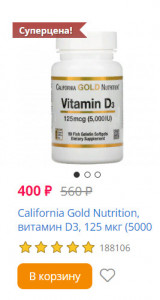THE IMPORTANCE OF OMEGA-3
By
Rhonda Perciavalle Patrick, Ph.D.
Copyright © 2013by Rhonda Patrick, Ph.D.
All rights reserved.
- [+] Открыть спойлер
- Omega-3 fatty acids are polyunsaturated fatty acids and consist of eicosapentaenoic acid
(EPA), docosahexaenoic acid (DHA), and alpha-linolenic acid[1] Omega-3 is an essential
fatty acid (EFA) that must be provided in the diet, and cannot be made within the human
body. [2] Fatty fish, such as salmon, are the primary source of both EPA and DHA
currently
in the human diet. However, the EPA and DHA that fish store in their fat comes from
ingestion of microalgae, such as zooplankton and phytoplankton. Microalgae Oil, thus, is
an alternative to fish oil which is more sustainable, and is also high is EPA and DHA, and
already available on the market.[3] Microalgae Oil has the added benefit of being more
appropriate for some vegetarian diets. Flax seed, walnuts and soybeans are the primary
sources of ALA. [1]
► Показать
Another class of polyunsaturated fatty acids are the omega-6 fatty acids. The first
member of the omega-6 fatty acids is linoleic acid (LA) and the major dietary source consist
of most vegetable oils including corn, peanut, sunflower, safflower, and olive oil. [2]The
ideal dietary ratio of omega-6 to omega-3 fatty acids is approximately 1:1. However, the
ratio of omega-6 to omega-3 fatty acids in the average American diet is about 20:1.
[4]What we lack in omega-3 in our diet, our bodies must instead, use omega 6 as a
substitute. The consequences of excess omega-6 fatty acids are detrimental and promote
many diseases including cardiovascular disease, cancer, diabetes, inflammatory, and
autoimmune diseases. [5][6][7][8][9] It is important to note that omega-3 and omega-6 fatty
acids compete for the same desaturase enzyme, delta-6 desaturase. [10]Both alpha-linolenic
acid (omega-3) and linoleic acid (omega-6) bind to delta-6 desaturase, however, alpha-
linolenic acid (ALA) has a higher affinity for the enzyme. Upon binding to delta-6
desaturase, alpha-linolenic acid (ALA) can be converted into eicosapentaenoic acid (EPA)
and, subsequently, docosahexaenoic acid (DHA), whereas, linoleic acid (LA) is converted
into arachidonic acid, a very potent pro-inflammatory molecule. [10] An additional study
found that linoleic acid (omega-6) inhibits eicosapentaenoic acid (EPA) incorporation from
dietary fish oil supplements. [11]These data suggest that in order to obtain maximum
benefits from omega-3 fatty acids it is important to decrease omega-6 fatty acid intake. It is
also very important to note that although ALA can be converted into EPA and DHA, this
conversion is very inefficient. In one study, only 5% of ALA was converted into EPA and only
0.5% was converted into DHA . [12] (ALA).
Recommended Doses of Omega-3 Supplementation
In 2002, the U.S. Institute of Medicine established a daily adequate intake of omega-3
fatty acids (see table below). [13] However, these recommended values are contested by
studies that suggest higher levels of omega-3 may be necessary for the general
population. [14]
Age/Sex Amount
Infants (0-12 months) 0.5 grams
Children (1-3 years) 0.7 grams
Children (4-8 years old) 0.9 grams
Children (9-13 years old) 1.0 grams
Female Adolescents and Adults (14+ years) 1.1 grams
Male Adolescents and Adults (14+ years) 1.6 grams
Female (Pregnant) 1.4 grams
The American Heart Association recommends
2-4 grams daily of EPA + DHA omega-3 fatty
acids for patients
that need to lower their serum triglyceride levels. [15]
Vitamin E
Omega-3 fatty acids are easily oxidized and highly susceptible to lipid peroxidation, which is
oxidative damage of lipids. [16]Vitamin E plays a critical role in the prevention of oxidation
of omega-3 fatty acids. Data from both animal and human studies indicates that as omega-
3 fatty acid intake is increased, higher levels of vitamin E are required to prevent lipid
peroxidation. The recommended ratio of vitamin E to omega-3 intake is 0.6 mg of
vitamin E or every gram of omega-3 fatty acid. [16]
Omega-3 Safety, Side Effects, and Toxicity
The National Institute of Medicine has not established a tolerable upper level of intake for
omega-3 fatty acids. [13]Omega-3 fatty acids are well-tolerated and serious adverse side
effects have not been reported. The most common adverse side effect is a fishy
aftertaste. It has been reported that excessive doses of omega-3 fatty acids may prolong
bleeding
time. [17]
The Anti-Inflammatory Properties of Omega-3
Inflammation is responsible for an plethora of diseases including rheumatoid arthritis,
atherosclerosis, asthma, inflammatory bowel disease, depression, Crohn’s disease,
ulcerative colitis, psoriasis, lupus erythematosus, multiple sclerosis, migraine headaches,
and diabetes. [18][19][20] Omega 6 fatty acids produce arachidonic acid and subsequently
generate pro-inflammatory eicosanoids such as prostaglandin (PG)E2, leukotriene B4, and
thromboxane A2, which all mediate the inflammatory response. [21]Fish Oil, as well as
other
omega-3 fatty acids, inhibit the conversion of arachidonic acid to prostaglandins and
leukotrienes, decreasing the inflammatory response. [22]Supplementation with omega-
3
also reduces serum levels of tumor necrosis factor alpha (TNF-alpha) and interleukin 1
(IL-1), both markers of inflammation. [23][24] Additionally, DHA supplementation reduces
inflammation as measured by decreased levels of C-reactive protein (CRP) and IL-6, both
markers of inflammation. [25] These data suggest that omega-3 fatty acids are potent
anti-
inflammatory molecules.
Rheumatoid Arthritis
The pro-inflammatory cytokines TNF-alpha and IL-1 are both implicated in the cause
of chronic arthritis. [26][27]The synthesis of both TNF-alpha and IL-1 beta are
dramatically reduced in humans supplementing with omega-3 fatty acids from fish oil.
[28] In another
study, humans supplementing 9 grams of fish oil daily for four weeks displayed a 74%
reduction in TNF-alpha and 80% decrease in IL-1 beta synthesis. [29]Patients with
rheumatoid arthritis ameliorated their clinical symptoms and decreased their TNF-alpha
and IL-1 beta levels when supplementing with high doses of fish oil daily. [30]In a mouse
model
of rheumatoid arthritis and autoim
чОрт, переоценил свои силы. Не получится скопировать текст...
Заболел

.
Источник:
http://www.foundmyfitness.com/reports/omega3-report.pdf[/spoil]



 Доктор Дуг Бибус получил степень бакалавра в Университете Манкейто, а степени магистра и доктора наук в области биохимии питания – в Университете Миннесоты. Является членом преподавательского состава в Центре Оздоровления Университета Миннесоты и активным исследователем в области биохимии жирных кислот и питания. Считается одним из авторитетнейших экспертов мира по омега-3. Эта репутация закрепилась за ним после его работы в академической лаборатории профессора Ральфа Т. Холмана, который ввел термин омега-3 и исследовал метаболизм и высокую важность омега-3 для здоровья. Научные интересы доктора Бибуса включают роль незаменимых жирных кислот в питании человека и животных, влияние омега-3 на течение воспалительных процессов, применение жирных кислот в лечении заболеваний и влияние окислительного стресса на работоспособность человека и животных. Доктор Бибус является членом Американского Сообщества Химиков, Общества Интенсивной Терапии и Международного Общества Изучения Жирных Кислот и Липидов. Дважды получал награду Американского Общества Химиков в области аналитической химии. Входит в состав совета директоров Американского Общества Изучения Масел и является председателем отдела здоровья и питания и комитета по присуждению премий этой организации.
Доктор Дуг Бибус получил степень бакалавра в Университете Манкейто, а степени магистра и доктора наук в области биохимии питания – в Университете Миннесоты. Является членом преподавательского состава в Центре Оздоровления Университета Миннесоты и активным исследователем в области биохимии жирных кислот и питания. Считается одним из авторитетнейших экспертов мира по омега-3. Эта репутация закрепилась за ним после его работы в академической лаборатории профессора Ральфа Т. Холмана, который ввел термин омега-3 и исследовал метаболизм и высокую важность омега-3 для здоровья. Научные интересы доктора Бибуса включают роль незаменимых жирных кислот в питании человека и животных, влияние омега-3 на течение воспалительных процессов, применение жирных кислот в лечении заболеваний и влияние окислительного стресса на работоспособность человека и животных. Доктор Бибус является членом Американского Сообщества Химиков, Общества Интенсивной Терапии и Международного Общества Изучения Жирных Кислот и Липидов. Дважды получал награду Американского Общества Химиков в области аналитической химии. Входит в состав совета директоров Американского Общества Изучения Масел и является председателем отдела здоровья и питания и комитета по присуждению премий этой организации.

